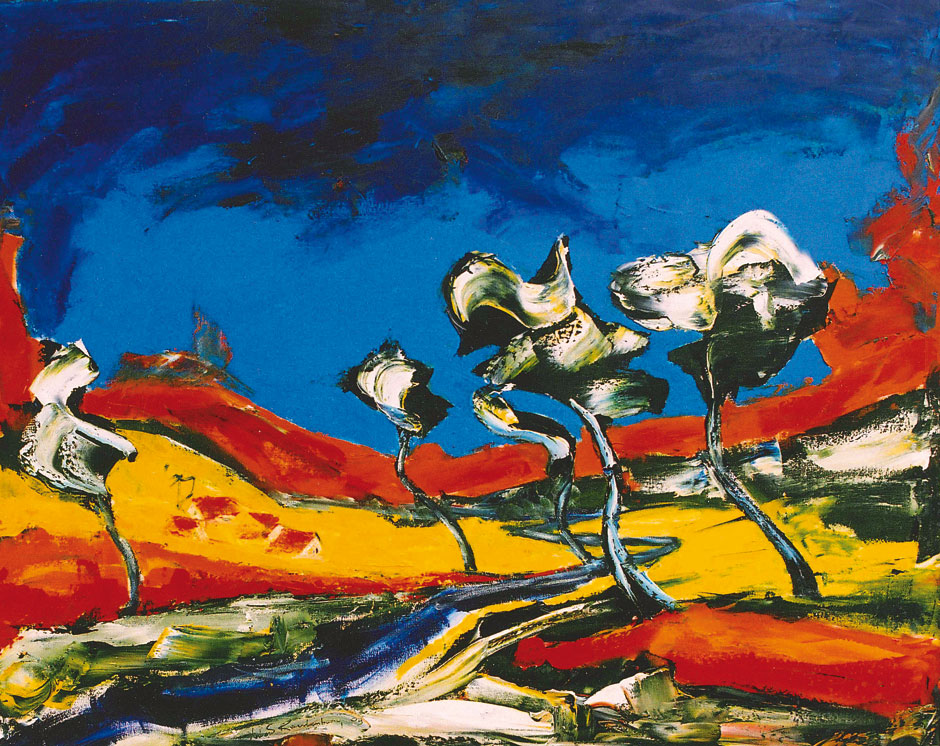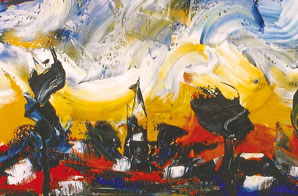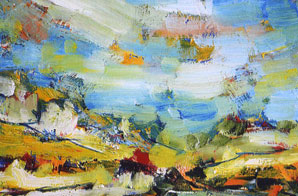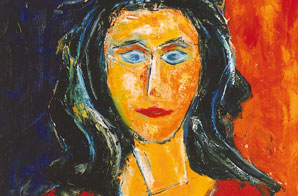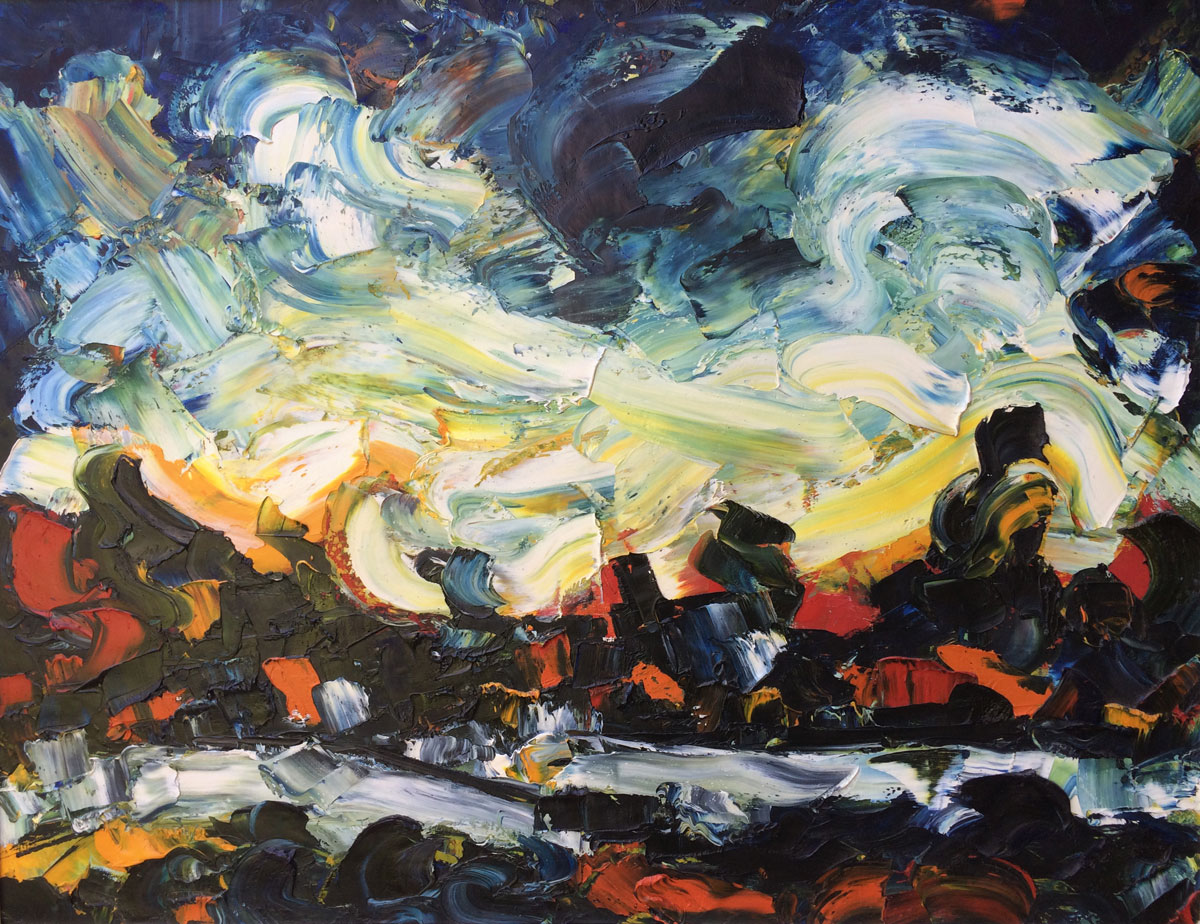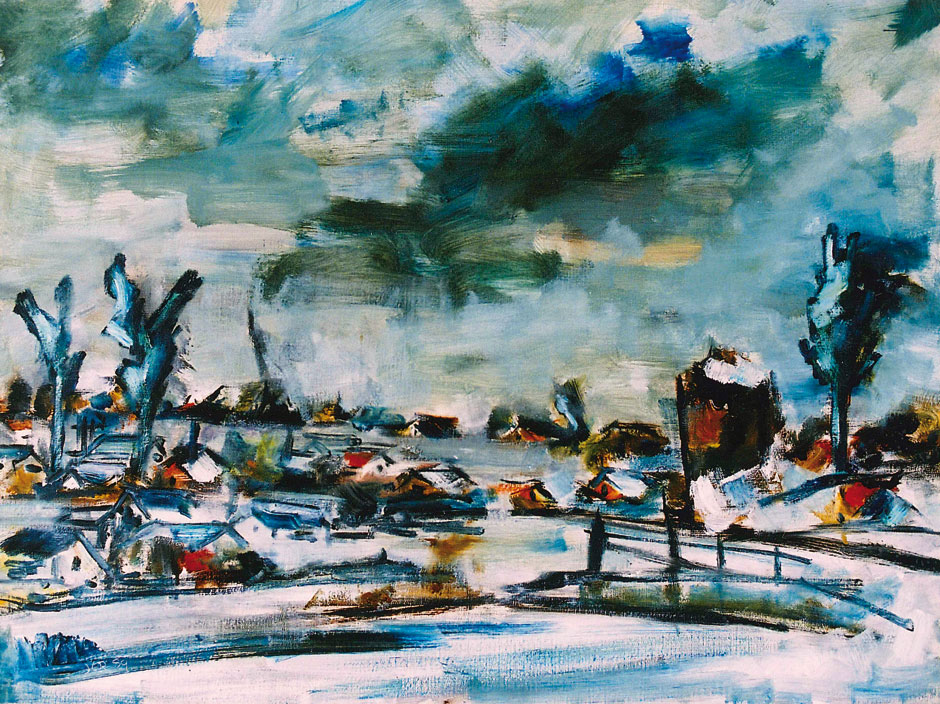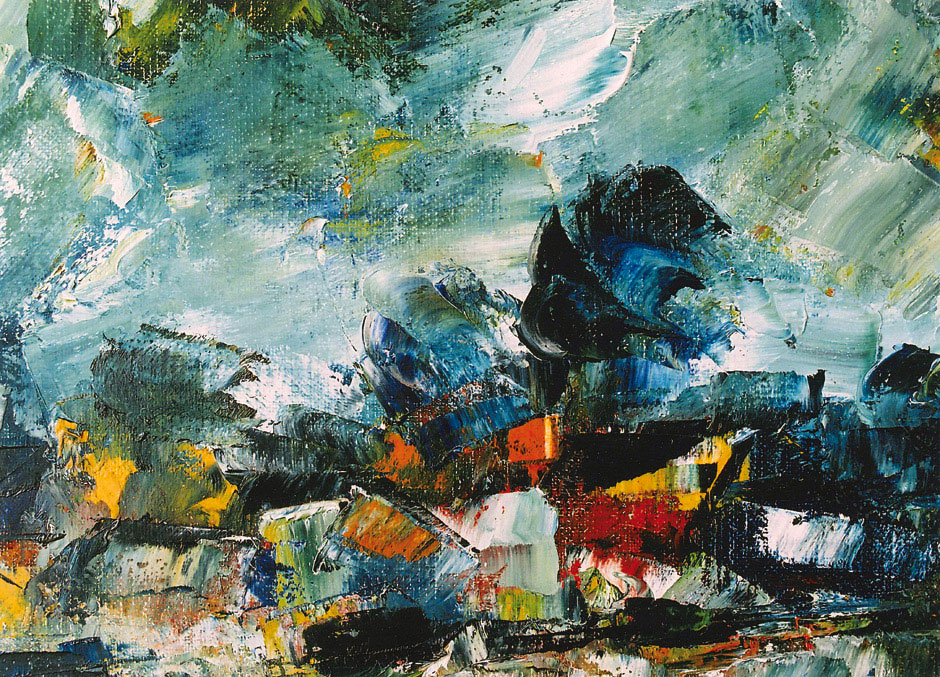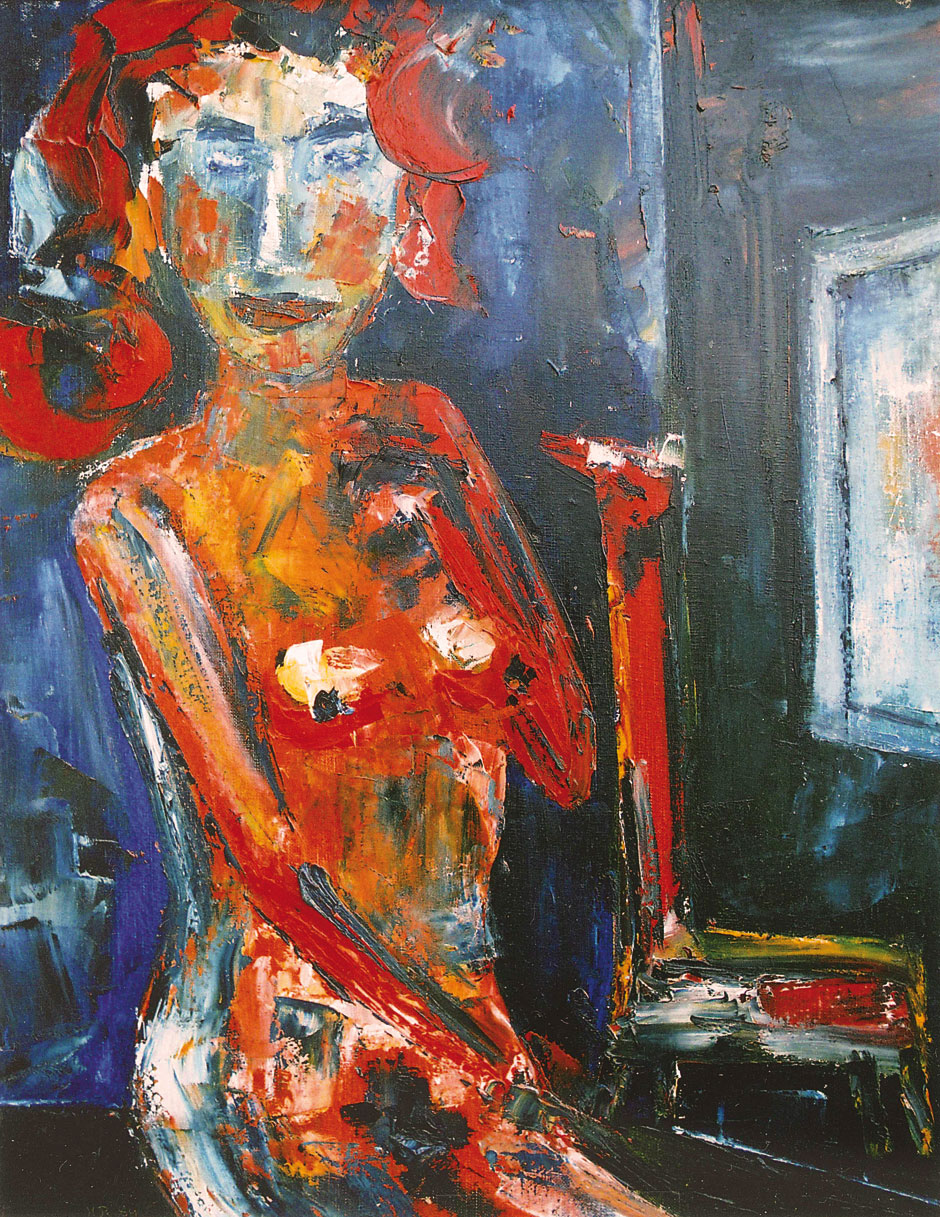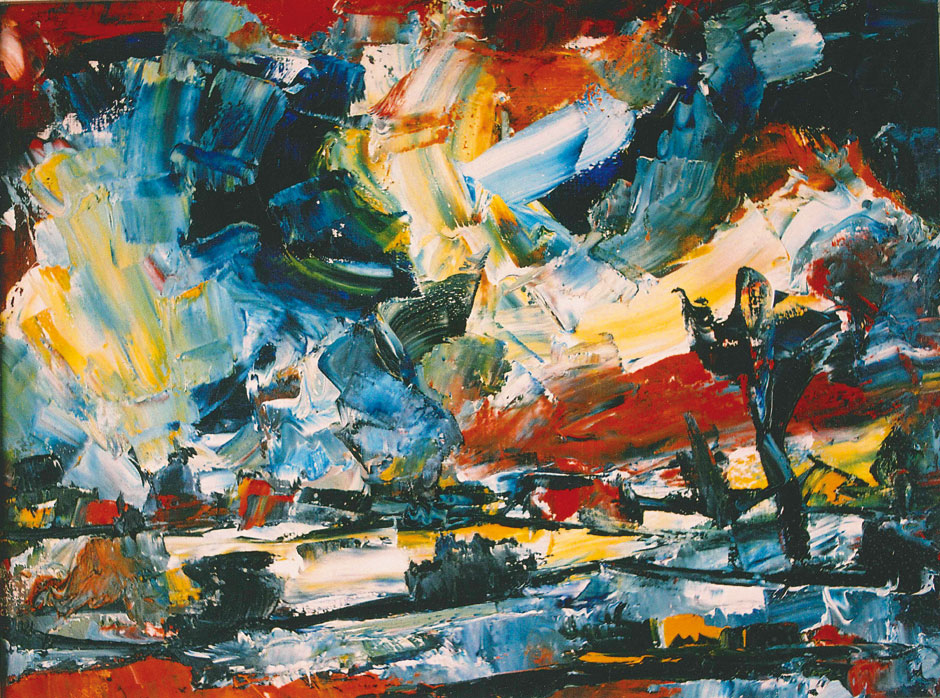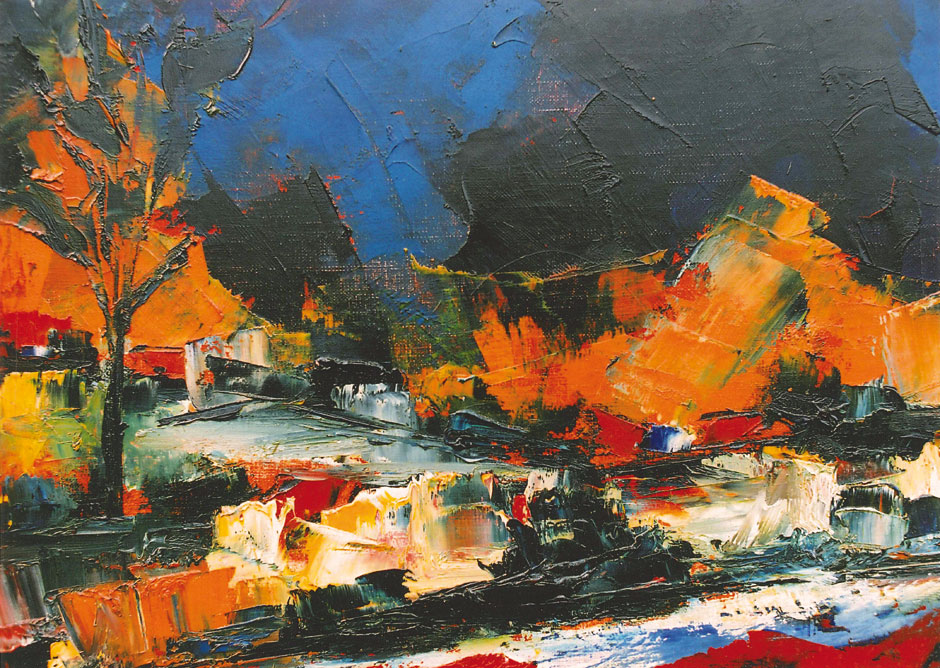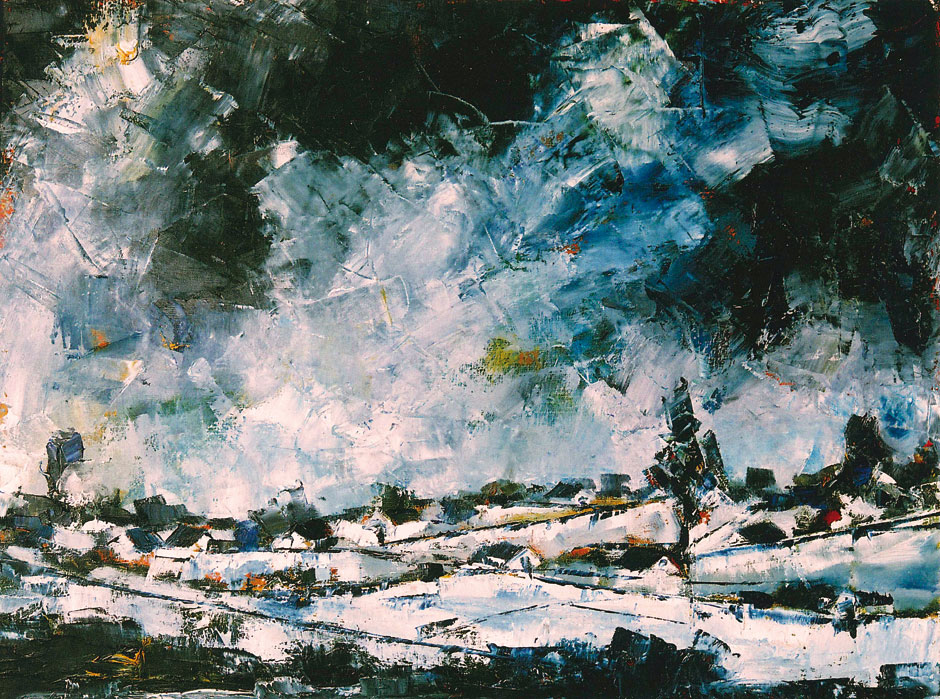Hubert Roestenburg’s way of Painting landscapes
is similar to the way his ancestors painted landscapes. By himself, out in the field. Hubert Roestenburg comes from a long line of landscape painters that goes back more than three hundred years.
All he needs is an easel, a painting brush or palette-knife, open fields, wind, sun, rain or snow. It is this interplay of elemental forces out of which Hubert Roestenburg creates his landscape paintings. One might say he “gives birth” to them. He experiences himself being part of an orchestra producing a symphony stemming from the natural elements as well as his responding emotions. The result of this process brings forth new creations as a boosts of colored oil on canvas.
The expressionist painter Hubert Roestenburg at work
When you see Roestenburg sitting there in the fields, you might get the vision of an ancient druid with his harp, singing a magical tune, talking to the elements and the Gods. He’s been creating his magic for a long time and although the “mood” of his work seems to change from time to time, the intensity never does. It’s always present, on the canvas, in full force.
He started working in oil as a child, had his first exhibit as a teenager and has been tirelessly exploring a painting style that is all his own. He did not declare himself to be a German Expressionist; the European art critics decided that he belonged to the movement known as German Expressionism. Most consider him an expressionist painter pur sang. Read about Hubert Roestenburg’s life’s story
Click images to enlarge and to learn more about each individual painting
